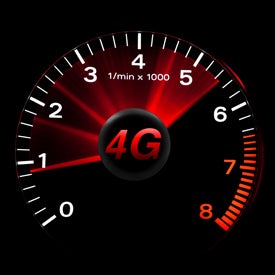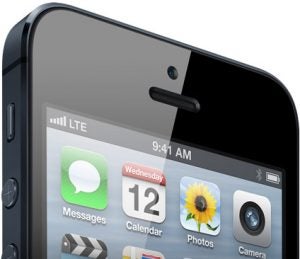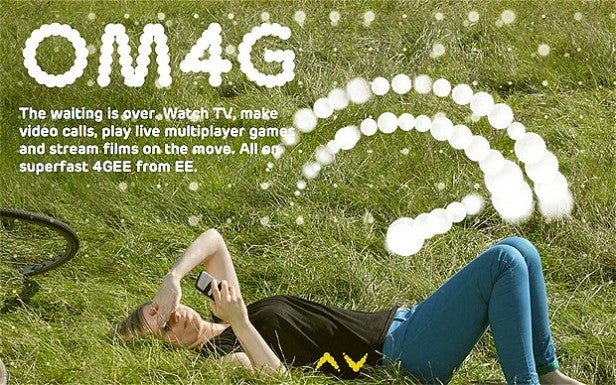4G Auction Fallout: Finding the Best Network For You

 The launch of the PlayStation 4 may have dominated technology news this week, but a far more important and wide-ranging event for UK residents also occurred: the winners of the 4G spectrum auction were announced. It isn’t surprising the news largely flew under the radar; the process was long and arduous, the subject of the bids is complex and its end result doesn’t immediately impact the consumer. But boy will it, so let’s break things down.
The launch of the PlayStation 4 may have dominated technology news this week, but a far more important and wide-ranging event for UK residents also occurred: the winners of the 4G spectrum auction were announced. It isn’t surprising the news largely flew under the radar; the process was long and arduous, the subject of the bids is complex and its end result doesn’t immediately impact the consumer. But boy will it, so let’s break things down.
What Is 4G?
The first thing to say about 4G is that the name is misleading. 4G is actually an extension of 3G which squeezes the last (but easily most significant) speed gains out of the standard. Experts refer to it as 3.9G or LTE (Long Term Evolution), but understandably this isn’t a great marketing term and given its potential to increase mobile data speeds by up to 20x it’s understandable why the powers that be have decided to market it as 4G. Genuine 4G (which, amusingly, is now likely to be labelled ‘5G’) won’t be with us for another decade. 
What was at stake?
4G is split into three primary spectrums in the UK: 800MHz, 1800MHz and 2600MHz, with the lion’s share of 800MHz and 2600MHz up for auction. Bidders were O2, Vodafone, Three, Everything Everywhere and British Telecom. BT has no plans to become a mobile carrier again, but instead wants a section to augment its nationwide service of BT OpenZone wireless hotspots.
As for the spectrum itself, there is a simple rule of thumb: the lower the number the further it will travel (good for increasing coverage) but the higher the number the faster the speeds it can deliver (good for congested urban environments). As such, those living in rural areas should look for a provider with lots of 800MHz spectrum and those in urban would benefit from a lot of 2600MHz spectrum.
Crucially 1800MHz, despite being a decent all rounder and the most common band for 4G services around the world, was not up for auction. In fact only Everything Everywhere owns any 1800MHz spectrum, which it had used for 2G services. Last year Ofcom controversially allowed EE to reuse some of this spectrum for 4G (which gave the company a significant head start on its rivals) under the condition it sold a large slice (2x 15MHz) to Three for a capped fee of £425m to protect its market position as the smallest carrier ahead of the main auction.
So Who Got What?
Vodafone
2 x 10 MHz of 800 MHz
2 x 20 MHz of 2.6 GHz and
1 x 25 MHz of 2.6 GHz (unpaired)
Total paid: £791m
Vodafone was by far the biggest bidder splashing out £791m for five chunks of spectrum. Most notably it attained the joint largest share of 800MHz spectrum which means it is strongly placed for services in rural areas while it also bought the second largest slice of 2600MHz. The only hole in its armour is the aforementioned lack of 1800MHz spectrum, but these purchases should be enough to offset it.
Everything Everywhere
2 x 5 MHz of 800 MHz
2 x 35 MHz of 2.6 GHz
Total paid £588.9m
EE was the second largest bidder attaining the greatest portion of 2600MHz spectrum of any carrier. Strangely EE didn’t invest as heavily in the 800MHz band, but it remains to be seen if it believes its existing 1800MHz 4G service is strong enough to handle any coverage issues.
O2
2 x 10 MHz of 800 MHz
Total paid: £550m
O2 spent the third highest total and surprisingly skipped purchasing any 2600MHz spectrum whatsoever instead opting for the joint largest 800MHz acquisitions. The theory behind this is that O2’s existing infrastructure of extensive WiFi hotspots will support urban needs – a smart move just so long as it doesn’t backfire in major cities where the largest concentration of customers exist. Interestingly O2 has also taken on Ofcom’s coverage obligation to provide indoor coverage to 98 per cent of the UK population by 2017.
Three
2 x 5 MHz of 800 MHz
Total paid: £225m
Given it is by far the smallest network Three predictably paid the least, but it actually came out well. It’s 800MHz purchases were price protected by Ofcom and combined with its 30MHz chunk of 1800MHz spectrum from EE it is in a strong position. Yes it lacks any 2600MHz, but given Three’s smaller customer base and traditionally strong backbone of 3G services this combination should prove more than enough. Of course Three’s recent announcement to charge no premium for 4G on its tariffs will no doubt put this to the test. 
What Happens Next?
From this outline alone you will likely be forming conclusions about which network looks best served to deliver your 4G needs, but it isn’t quite that simple. Now the auction is closed Ofcom will allow carriers to trade spectrum between them while networks will also continue to share masts in many parts of the country. It also remains to be seen how pricing will affect demand with Three’s pricing in particular set to drive down tariffs. A further wake up call is EE’s recent revelation that it has actually lost customers since its premium priced 4G service went live last October.
Furthermore, carriers need to stock up on 4G capable handsets and this is a far from simple task as not all models support all three spectrums. Most notably the 4G connectivity in the iPhone 5 only works on the 1800MHz spectrum which means it will never reach next generation speeds on O2 or Vodafone. Qualcomm’s announcement this week that it has come up with a single chip to support all 4G bands worldwide is welcome and will ship to handset makers in the second half of 2013, but until it proliferates this is another unwelcome complication for 4G adopters. 
4Give Or 4Get?
Ultimately 4G will be worth the hassle. It drastically increases the bandwidth available to you on the move and with appetite for on-demand music and video and Cloud-based consumer and business services increasing rapidly its launch is vital to the UK’s technological and economic future.
That said if you live in an area of strong 3G coverage and have recently signed a long term contract we wouldn’t despair. Formal roll out times from Vodafone, O2 and Three have yet to be announced (six months seems a minimum) and there will a staggered geographical launch and initial confusion about handset spectrum compatibility from region to region.
Still the revolution is coming and it has just successfully leapt its most significant remaining hurdle…


